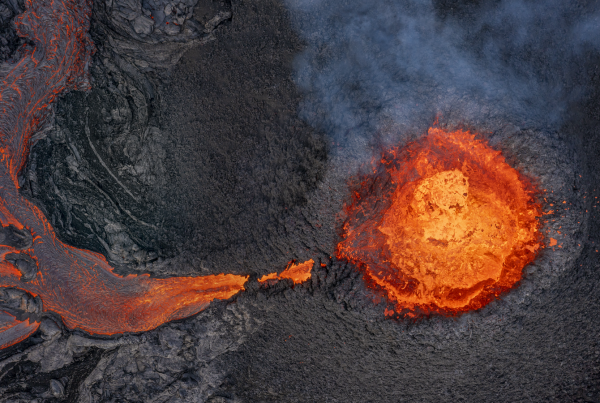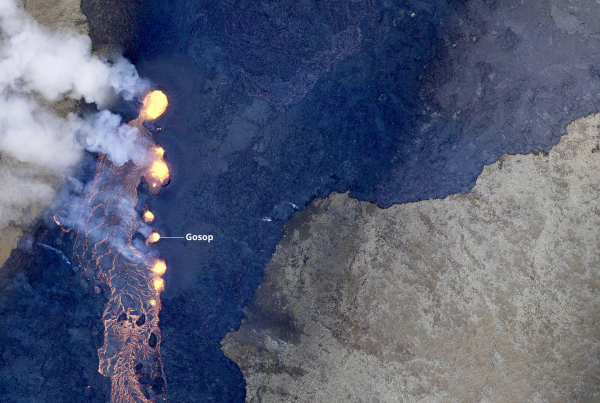 Is Iceland Safe to Visit?
Is Iceland Safe to Visit?
The Reykjanes Peninsula has captivated the world’s attention with a remarkable sequence of volcanic events in the last three years. After a lengthy dormancy of nearly 800 years, this region awoke in 2021 with the eruption at Fagradalsfjall. This might be the beginning of a new phase of eruption in the peninsula. During the last few weeks seismic unrest has been ongoing in the vicinity of Grindavík and eruption is considered likely. The town of Grindavík has been evacuated and the Blue Lagoon closed. The area affected is still limited and all international flights are operating as usual.
Recent Seismic and Volcanic Activity
In 2021, the Fagradalsfjall eruption broke this region’s centuries-long silence. It drew global attention, not the least because of the proximity to roads leading to Reykjavík and other towns in the area. This gave thousands of people the opportunity to see an eruption up close.
Over the subsequent years, two more eruptions followed in the same area, each characterized by their gentle effusion. These eruptions, though spectacular, remained non-threatening, allowing us to marvel at their splendour from a safe distance.
These three eruptions also gave scientists unprecedented access to learn how to deal with lava flows in the vicinity of essential infrastructure. There were numerous tests carried out on building walls and other measures to safeguard infrastructure.
The Current Volcanic Activity and Safety Measures
Recent months have witnessed a resurgence of seismic activity, once again capturing our collective interest, especially since it is happening closer to infrastructure and affecting the people of Grindavík.
According to the Icelandic Meteorological Office, seismic activity has been on the rise since late October, raising concerns about a potential volcanic eruption near Grindavík, a fishing town of more than 3.500 inhabitants on the south coast of the Reykjanes Peninsula. In the interest of safety, authorities have initiated an evacuation of Grindavík.
Iceland’s position on the Mid-Atlantic Ridge entails that volcanic and seismic activities are intrinsic to its geological identity. These events, from minor tremors to larger quakes and eruptions, like those in the Reykjanes Peninsula, are meticulously monitored by experts. Iceland tends not to get earthquakes above M6, the largest earthquake in the current seismic activity has been around M5.
The Affected Area is Limited
This situation primarily affects a specific portion of the Reykjanes Peninsula and its immediate vicinity within a few kilometres. Authorities have proactively enforced road closures to ensure the safety of those in the vicinity.
Everyone’s focus is on the people of Grindavík who had to leave their houses with little to no notice. People of the neighbouring towns have offered their homes, available flats and all possible accommodation.
To support the people of Grindavík, please consider donating to the Icelandic Red Cross.
This closure also means that one of the biggest tourist attractions in Iceland, the Blue Lagoon, has been temporarily closed. It might also affect the Geothermal plant of Svartsengi that provides electricity and warm water to the neighbouring communities.
As for now, there is no effect on air travel or the international airport in Keflavik.
The effects of the recent seismic events are not known until an eruption happens. The most likely scenario, if an eruption occurs, is that the effects will be limited to the area around Grindavík and will not disturb air travel or the main tourist attractions in Iceland.
Reykjavík the capital of Iceland is not affected even though it’s only 40 km away (25 mi.).
Iceland is open for business
It’s important to recognize that Iceland is a vast and diverse country with much to offer. The rest of Iceland remains unaffected and continues to welcome travellers. Keflavík International Airport and the Capital Reykjavík are on the Peninsula but are not affected by these events.
Most of the popular tourist destinations in Iceland, including the Golden Circle, the South Coast and the Snæfellsnes Peninsula remain open. Operations like the LAVA Centre at Hvolsvöllur, northern lights tours, glacier walks on Sólheimajökull and Ice Cave Exploration in Vatnajökull remain open and welcome guests like before.
What to do if the Blue Lagoon remains closed?
There are many alternatives to the Blue Lagoon. In the vicinity of Reykjavík, there are a few fantastic geothermal lagoons.
Sky Lagoon is the newest and one of the hottest destinations in the Reykjavík area.
Hvamsvík is a small hidden gem, nested in a fjord surrounded by mountains but only 30 minutes drive from Reykjavík. Selected by Time Out Magazine as one of the best things to do in 2023.
Laugarvatn Fontana is another nice geothermal Spa on the Golden Circle.
Secret Lagoon is one of Iceland’s oldest natural swimming pools, also on the Golden Circle.
Mývatn Nature Baths is the only experience which is almost the same as the Blue Lagoon but situated in the North East of the country
Icelandic Reliable Sources of Information
The importance of seeking reliable information from local Icelandic sources cannot be stressed enough. International media coverage can often be misleading or even prone to click-baiting. Social media by non-specialists can be very misleading and even harmful. The following sources provide accurate and up-to-date information regarding the situation in Iceland:
- The Icelandic MET Office
- RÚV – The Icelandic National Broadcasting Service
- Safetravel
- The Icelandic Road Administration
- Visit Reykjanes
At LAVA Centre we try to communicate the message from these reliable sources and more. So please also follow our blog and social media platforms.



